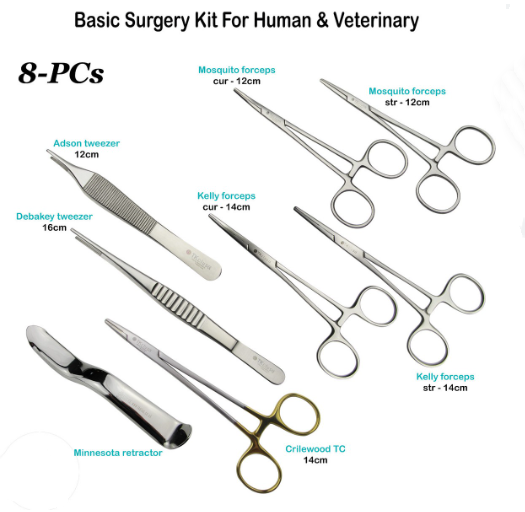General surgical kits

General surgical kits contain instruments and supplies used to perform procedures like cutting, dissecting, manipulating, grasping, and suturing tissues and organs during surgeries in the abdomen, esophagus, intestines, and other parts of the body. These kits provide the necessary, sterile tools for various procedures, from basic operations to more complex ones, ensuring the surgical team has everything they need.
Key uses of general surgical kits
Cutting and Dissecting:
Scalpels are used to make incisions, while other tools help to separate and remove tissues.
Grasping and Holding:
Forceps are used to hold tissues, blood vessels, or other objects securely without causing damage.
Manipulating:
Retractors are used to pull back tissues and organs, improving the surgeon's visibility of the surgical site.
Suturing and Clamping:
Instruments are used to close wounds by stitching them together with needles and thread or by using staples and clips.
Controlling Bleeding:
Specialized clamps and forceps are used to compress or control blood flow during procedures.
Wound Management:
Kits include dressings and other supplies to protect wounds and promote healing after the primary surgery is complete.
Components of a General Surgical Kit
A typical general surgical kit includes a variety of instruments, often made from durable stainless steel, such as:
Scalpels: For making precise incisions.
Surgical Scissors: For cutting different types of tissue.
Forceps: For grasping and holding tissues.
Retractors: For holding back surrounding tissues.
Needle Holders and Sutures: For closing wounds and joining tissues.
Towel Clamps: For securing surgical drapes.
Dressings and Gauze: For wound care.

 Send Email
Send Email